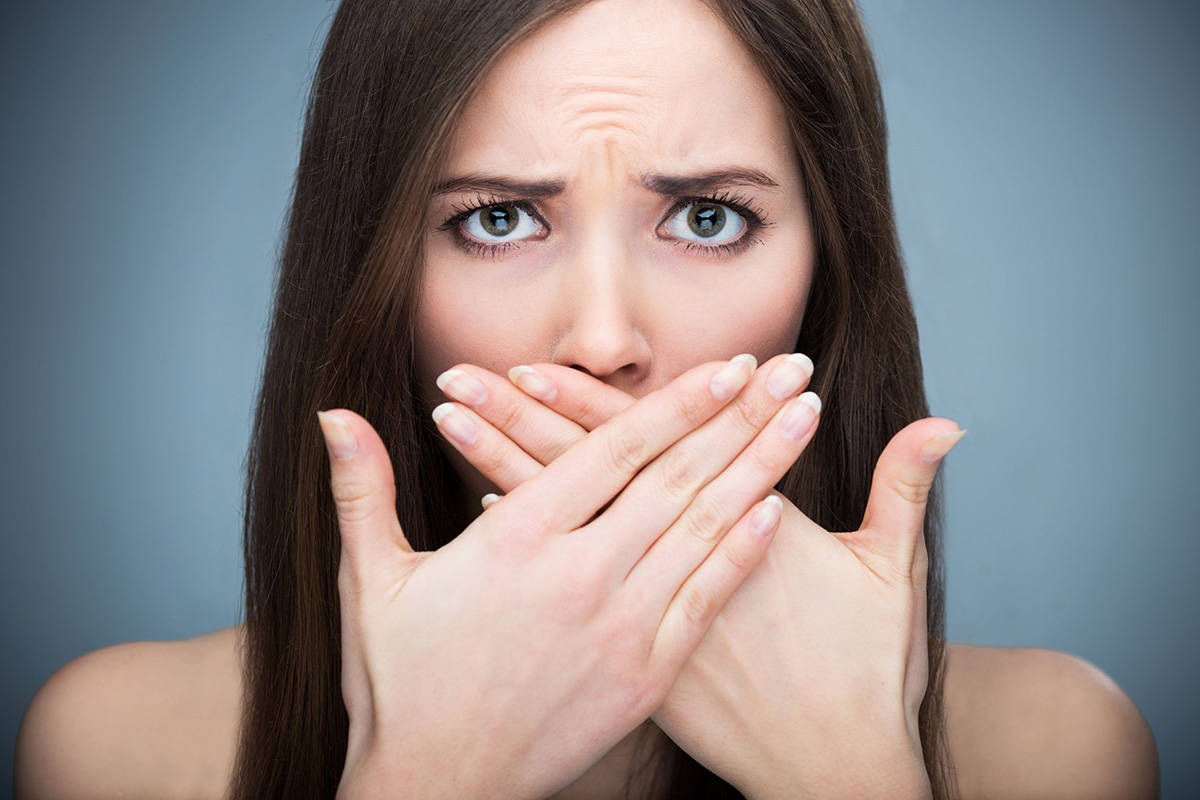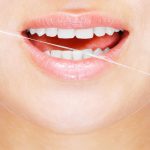 Bad gums equal bad breath. Halitosis is a term used to describe any unpleasant odor of expired air regardless of its origin. The American Dental Association (ADA) notes that the most common causes of bad breath are: certain foods such as garlic and onions, dry mouth, smoking and tobacco, medical conditions and periodontitis or gum disease. If teeth are not brushed and flossed routinely, plaque becomes a gateway for anaerobic bacteria that can lead to halitosis and eventually more serious consequences. Among these include gum bleeding and inflammation, chronic oral infections, and even tooth loss. A common approach most people take to cover the foul odor is to use commercial mouthwashes, toothpastes and chewing gum. This will not relieve the symptoms but will merely provide a chemical cloak to the odor, which can be even more offensive than untreated bad breath alone. If you notice that your gums are bleeding when brushing or flossing; it’s time to see your dentist or periodontist. This is a common sign of inflammation. Maintaining good oral hygiene, eliminating gum disease and scheduling regular professional cleanings are essential to reducing bad breath.
Bad gums equal bad breath. Halitosis is a term used to describe any unpleasant odor of expired air regardless of its origin. The American Dental Association (ADA) notes that the most common causes of bad breath are: certain foods such as garlic and onions, dry mouth, smoking and tobacco, medical conditions and periodontitis or gum disease. If teeth are not brushed and flossed routinely, plaque becomes a gateway for anaerobic bacteria that can lead to halitosis and eventually more serious consequences. Among these include gum bleeding and inflammation, chronic oral infections, and even tooth loss. A common approach most people take to cover the foul odor is to use commercial mouthwashes, toothpastes and chewing gum. This will not relieve the symptoms but will merely provide a chemical cloak to the odor, which can be even more offensive than untreated bad breath alone. If you notice that your gums are bleeding when brushing or flossing; it’s time to see your dentist or periodontist. This is a common sign of inflammation. Maintaining good oral hygiene, eliminating gum disease and scheduling regular professional cleanings are essential to reducing bad breath.
 ABOUT THE AUTHOR
ABOUT THE AUTHOR
› Dr. Irene Marron-Tarrazzi is a Board Certified Periodontist at Brickell Periodontics, specializing in dental implants and the treatment of periodontal diseases. She’s the 2nd VP of the American Dental Association and a visiting Professor at NSU and UF; BrickellPerio.com.
TOOTHY TRIVIA
Did you know that tooth enamel is the hardest substance in the human body? Or that the average American spends 38.5 total days brushing their teeth during their lifetime? Want more fun facts? Read on.
Text by Stacy Wynn
 Wonderful Water
Wonderful Water
People who drink 3 or more glasses of soda each day have 62% more tooth decay, fillings and tooth loss than those who don’t. This goes for sports drinks, too. The solution? Drink water.
 Floss Facts
Floss Facts
People who don’t floss (which debuted in 1882) are leaving 40% of their teeth uncleaned. The average American has at least 1 cavity by age 17.
 Animal Smiles
Animal Smiles
Giraffes have only bottom teeth. At the other end of spectrum, a tiny snail has over 25,000 teeth. A Blue Whale is the largest mammal on Earth, but they have no teeth.











